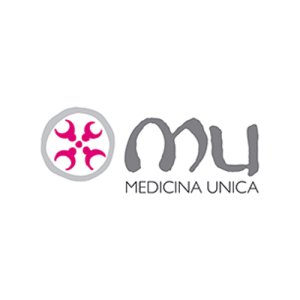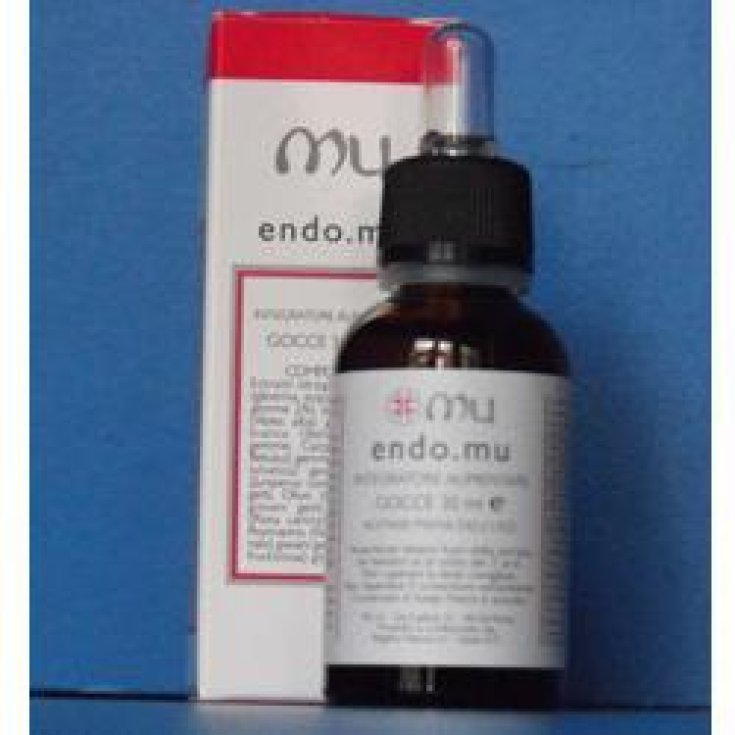Endo Mu Drops 30ml
19.76€
23.25€

- Brand: MU Srl
- Product Code: 921145153
- EAN:
- Availability: In Stock
- Purchase 3 items for 19.36€ each
- Purchase 4 items for 18.97€ each
- Purchase 5 items for 18.57€ each
MU
endo.mu
Food supplement that can promote reactivation, drainage and self-defense mechanisms that allow the body to re-establish its homeostasis (functional balance) and therefore the state of health and well-being.Abies alba
The fundamental property of silver fir is to relieve disorders associated with lung diseases. It is effective as an anti-catarral and disinfectant of the urinary tract. An excellent remineralizer, the gemmoderivatofactifies the fixation of calcium in the bones, stimulates the growth of weight and weight and the production of red blood cells.
Betula pendula
This plant contains tannins, resins, essential oil, betulin, glycosides. The fundamental property of Birch is to stimulate diuresis without inducing any side effects. This is why it is used to reduce edema of both renal and cardiac origin, to decrease the level of albumin in the urine and to favor the elimination of uric acid. The substances contained in it reduce the reabsorption of water, sodium, chlorine and nitrogenous waste by the kidney, favoring the production of urine and therefore carrying out a purifying action.All the parts used in Birch have similar actions: their most important action focuses on the kidneys and on the urinary tract and can be used effectively for percystic and other infections of the urinary system and for kidney stones.
Carpinus betulus
The organospecificity of the Hornbeam gemstone is electively directed to the rhino-pharynx, the trachea and the respiratory mucous membranes. It has an anti-catarrhal action, sedative of cough and healing of mucous membranes affected by logistic processes and reduces spasms of the upper respiratory tract.
Fagus sylvatica
Useful for its diuretic action in kidney stones, water retention, obesity and hypercholesterolemia.
Juniperus communis
Contains essential oil, pinene, limonene, hydrocarbon, junene, glycolic, glyceric, ascorbic, formic, malic acids, resin, juniperine, flavonoids, proteins, pentosans as active ingredients. The most important property of Juniper is to increase diuresis. It is also a disinfectant of the urinary and respiratory tract, it is a valid stimulant of digestion, an intestinal anti-fermentative, an expectorant and a cough suppressant.
European olea
Some substances present in this plant are valid antagonists of free radicals. The olive tree fights various reactive oxygen species and also counteracts the damage caused by free radicals to the cells (phenomenon called lipid peroxidation). Other studies suggest that the antioxidants present in the olive could have, thanks to the aforementioned activities, cardio and vasoprotective action in humans.
Rosehip
It is a plant very rich in ascorbic acid (vitamin C), accompanied by other organic acids. The content of flavonoids and especially dianthocyanidins is important. Vitamin C is essential in many oxidative processes, for example the synthesis of collagen and carnitine, it also promotes intestinal iron absorption. It also has a good antioxidant action, in association with vitamin A, vitamin E and selenium. This antioxidant action is present in the natural extractive form but much less in the synthetic one.
Rosmarinus officinalis
Rosemary is a nerve and circulatory stimulant, which in addition to the tonic and calming effects on digestion. It exerts a neurotonic and balancing action by regularizing the hepatodigestive state, the activity of the symbiont bacterial flora and detoxifying the organism. The antioxidant properties are due to rosmarinic acid and above all to diterpenes. They also have cholecystokinetic and inhibitory activities of the synthesis of prostanoids and therefore anti-inflammatory. Excellent metabolic activator, it extends its action to almost all the most important metabolic pathways, except glucides.
Rubus fructicosus
Contains a set of muscle relaxants, it is an interesting antispasmodic and also useful in enterocolitis and metrorrhagia.
Ingrediants
Silver fir (Abies alba); white birch (Betula pendula); hornbeam (Carpinus betulus); beech (Fagus sylvatica); juniper (Juniperus communis); olive tree (Olea europea); dog rose (Rosa canina); rosemary (Rosmarinus officinalis); bramble (Rubus fructicosus).
How to use
Take 10 drops 3 times a day.
Warnings
Do not exceed the recommended daily dose.
Keep out of the reach of children under three years of age.
Supplements are not intended as a substitute for a varied diet.
For pregnant or lactating women and children it is recommended to consult the doctor's opinion.
Format
30 ml bottle with dropper pipette.
Bibliography
- Belaiche, P .: Le drainage en phytothérapie.Phytotherapie. March 13, 1985.
- Bergeret, C .: Homeophathie et Dermatologie. Ed. Maloine, Paris 1986.
- Bergeret, C., Tétau, M .: La Phytothérapierenovée. Ed. Maloine. Paris.
- Brigo, B .: Phytotherapy and Gemmotherapy in clinical practice. LaGrafica Briantea, Como 1991.
- Brigo, B .: Man, phytotherapy, gemmotherapy. New Techniques Ed., Milan 1997.
- Campanini, E .: Practical manual of gemmotherapy. Ed.Tecnichenuovi, Milan1996.
- Duraffourd, C., D'Hervicourt, L., Lapraz, JC: Cahiers dePhytothérapie, 1,2,3,4, Masson, Paris 1983-1985.
- Fauron, R .: Gemmothérapie et teintures-mèresthérapie associées dans le traitement de certaines affectionshépatiques. Cahiers de Biothérapie, 87, supplément, Octobre1985.
- Guillemain, J., Tétau, M .: Contribution àl'étude d'un “tranquillisantvégétal”: Tiliatomentosa bourgeons. SociétéMédicale de Biothérapie, Sommaire 68, December 1980.
- Henry, P .: Bases biologiques de la gemmothérapie, Saint-Norbert, Tongerlo A. Belgium 1959.
- Henry, P .: Conception et pratique de la gemmothérapie, Bulletin d'Organothérapie et de Gérontologie, 7.
- Henry, P .: Gemmotherapy, Ricchiuto Editore, Verona 1989.
- Henry, P .: Gemmothérapie et clinique, Cahiers deBiothérapie, 25, 3, 1966.
- Henry, P .: Gemmothérapie. Thérapeutique par lesextraits embryonnaires végétaux. B.Westerlo, Impr. Saint Norbert, 1982.
- Henry, P .: Introduction à la Gemmothérapie, Cahiers de Biothérapie, 1.1, 1964.
- Henry, P .: Notes sur les connaissance sécologiques etphytosociologiques en Gemmothérapie, Cahiers de Biothérapie, 8,12,1965.
- Henry, P .: Place de la Gemmothérapie dans lamédicine moderne, Cahiers de Biothérapie, 12,12, 1966.

